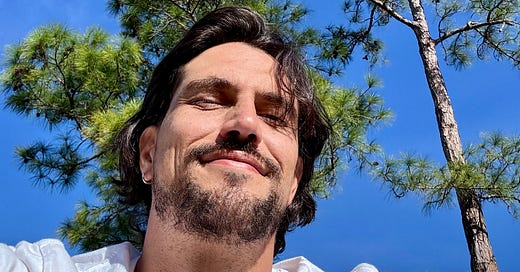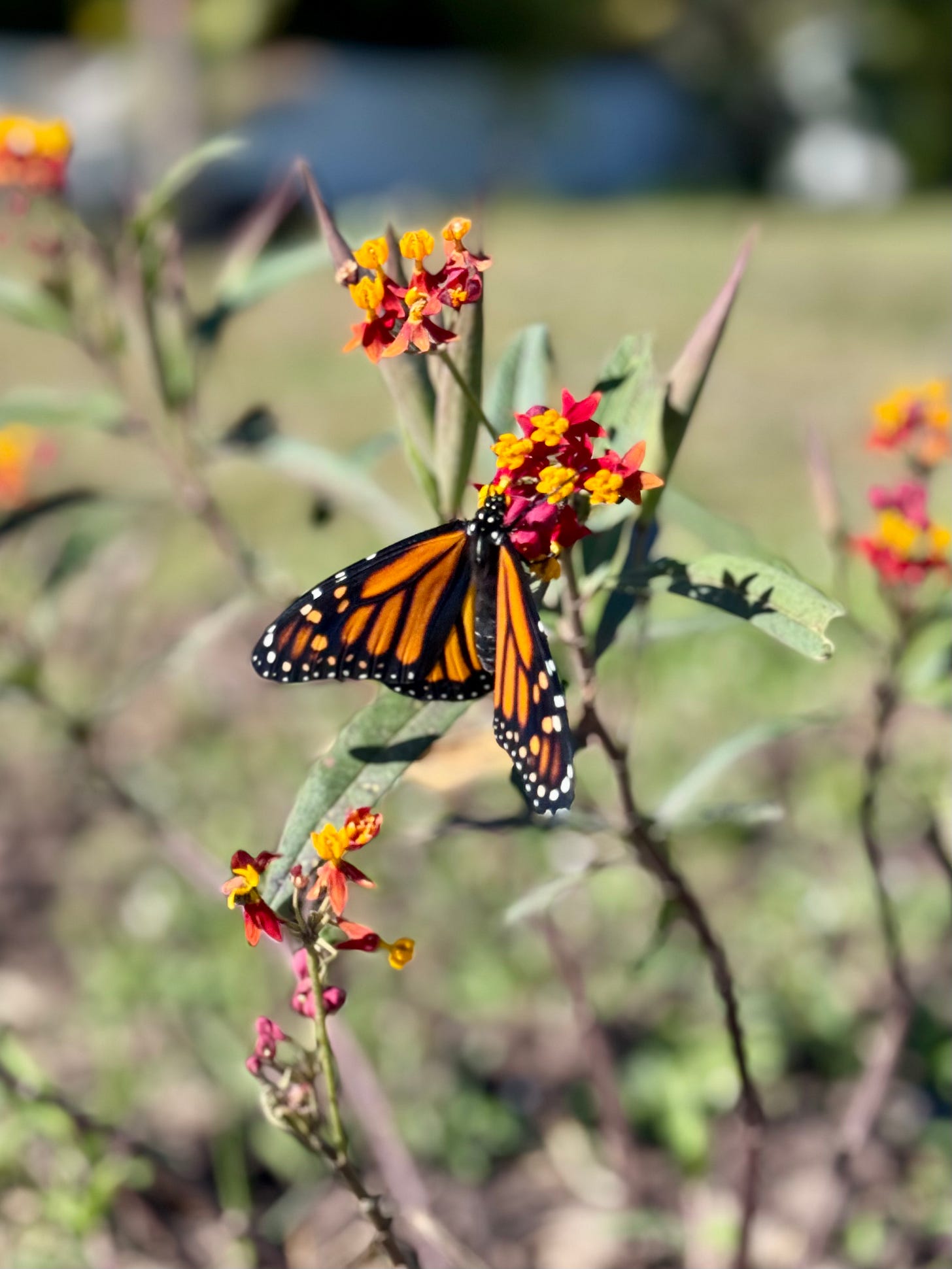Para leer la versión en Español, desliza hasta abajo.
Almost nine months ago, we moved from Mexico back to the United States, landing, once again, in Florida. This time, we settled about an hour and a half north of Miami, escaping the sprawling metropolis where we lived before exploring life south of the border.
Our new home is nestled in the rural part of Palm Beach County, a world away from the daily grind and noise of the cities. It’s a 1.25-acre property with a solid concrete house built in the 1970s. When we moved in, the land was mostly grass—a quintessential emblem of the American Dream’s obsession with pristine lawns. Yet, these stretches of green seemed devoid of purpose; I rarely saw my neighbors using their carefully manicured expanses. At least in Latin America, these would have been perfect fútbol turfs, alive with energy and community.
One of the lasting gifts from my time in Mexico was the knowledge I gained through courses in agroforestry and herbalism. These experiences deepened my connection to nature and introduced me to the wisdom of the Mayan calendar. Through this tradition I learned about my nawal/nahual (our spiritual guide): Q’anil, the seed. This profound insight planted something within me—a sense of responsibility and reverence for growth, both literal and metaphorical.
I must admit that patience is not one of my virtues, particularly in traditional gardening. The idea of meticulously curated flower beds has never appealed to me. What I enjoy, however, is the act of planting, propagating, collecting seeds, and pruning—working with plants and animals in harmony with their natural rhythms. Agroforestry has taught me the importance of getting in sync with the land, a practice that begins with observation. Experts recommend spending a year simply observing and learning from the environment before making significant changes. I’ve embraced this, spending countless hours contemplating my yard, tuning into its cycles and quirks. Some days I’m heartbroken to see pests destroying plants I had tended to, only to be surprised the day after when a flock of foreign birds comes in to munch on the critters, leveling the score in what will always be a natural balance.
During the early days of our new home, I did mow the lawn a few times—not for aesthetic reasons but to turn the grass into mulch and compost, enriching the soil and encouraging native species to reclaim their space. Today, about 90% of the land has transformed, no longer a monotonous green expanse but a diverse and thriving ecosystem. Where grass once dominated, a medley of species now flourishes, including plants once dismissed as “weeds” but now revealed as sacred and medicinal allies: gotu kola (promotes brain health), chanca piedra (fights vesiculitis), pennywort (boosts immune support), bhringraj (for skin health and hair growth), milk thistle (excellent liver detox), and saraguey (used in spiritual cleansing), to name a few.
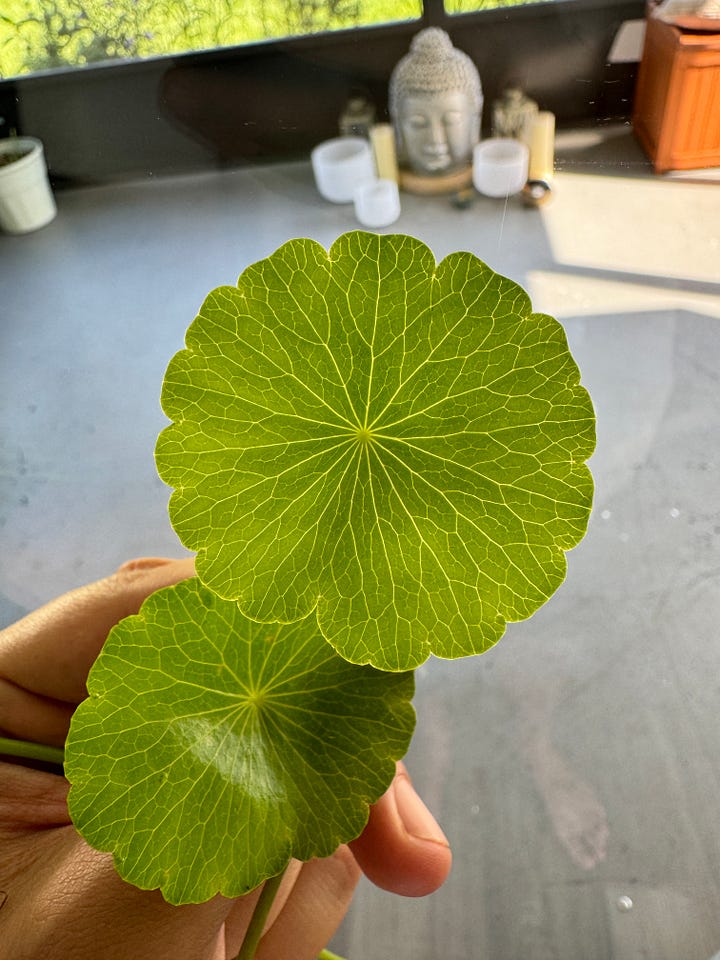
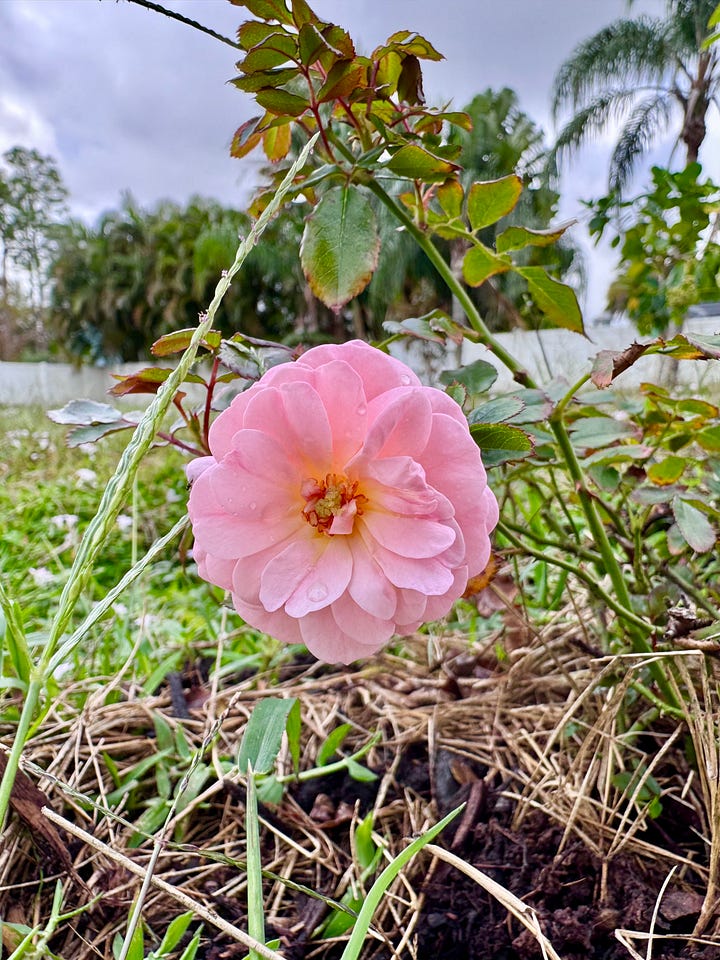
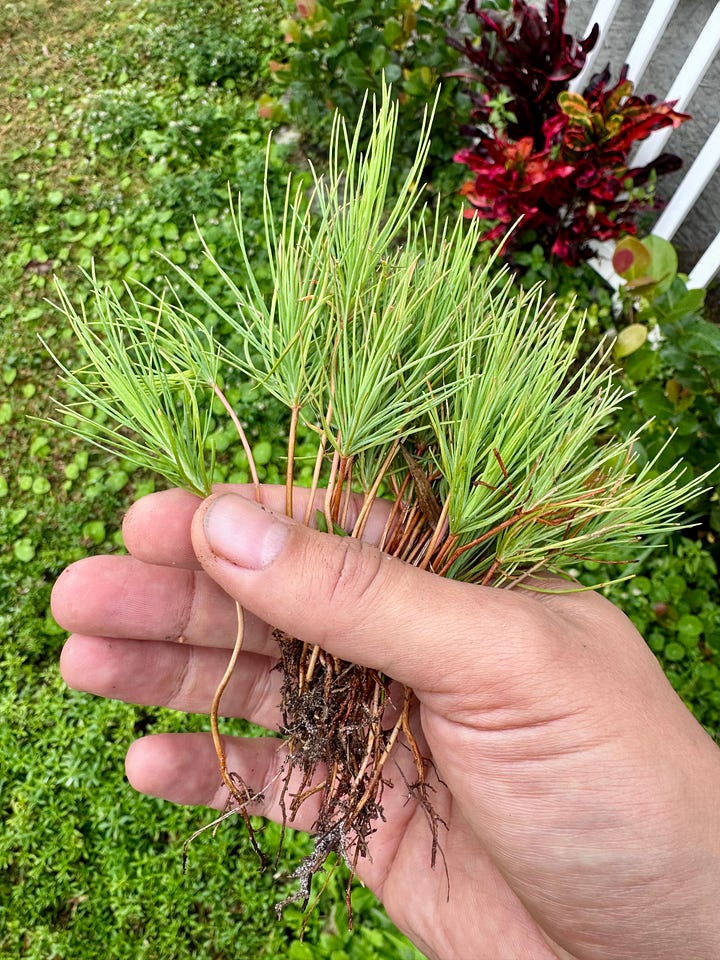
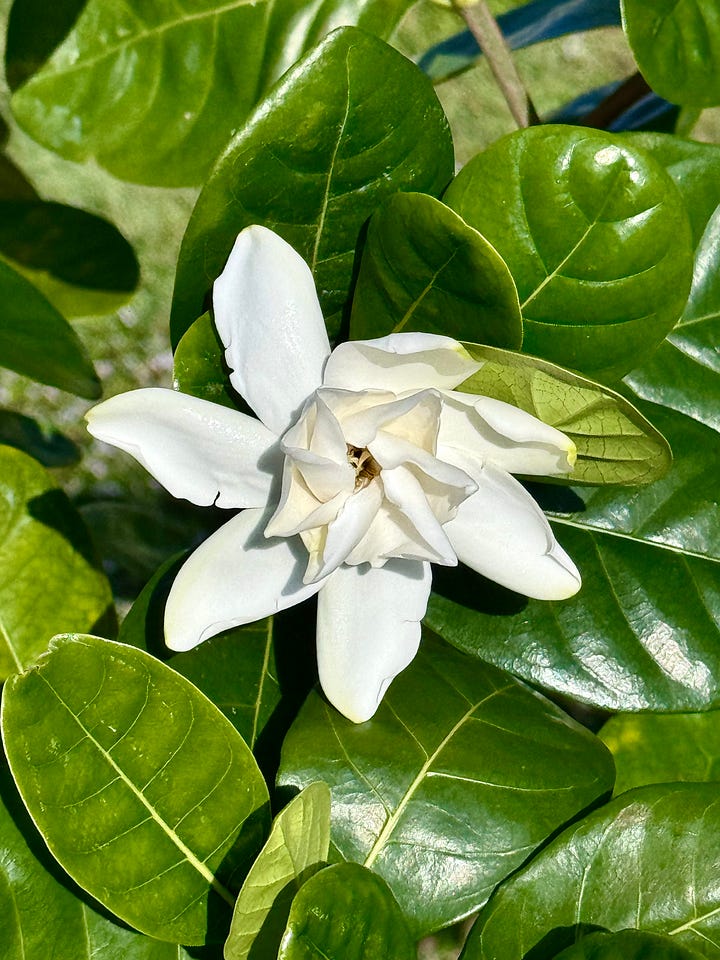
This journey has led me to experiment with sustainable landscaping inspired by the Miyawaki Method, an approach that advocates for densely planting native trees and shrubs to foster a cooperative kind of competition. The proximity of the plants strengthens their root systems and creates a robust mycelial network, transforming the space into a self-sustaining forest within three years.
It’s ten times denser and a hundred times more biodiverse than traditional reforestation methods. For experimentation purposes, I’ve widened the circle to include tropical species that thrive at this latitude. Jackfruit, loquat, mango, banana, lemon, lime, grapefruit, avocado, and mulberry now share the land, growing alongside pioneer plants like tobacco, burnweed, emilia, and Everglades tomato, which have sprouted independently along the edges of the fence. The list keeps growing.
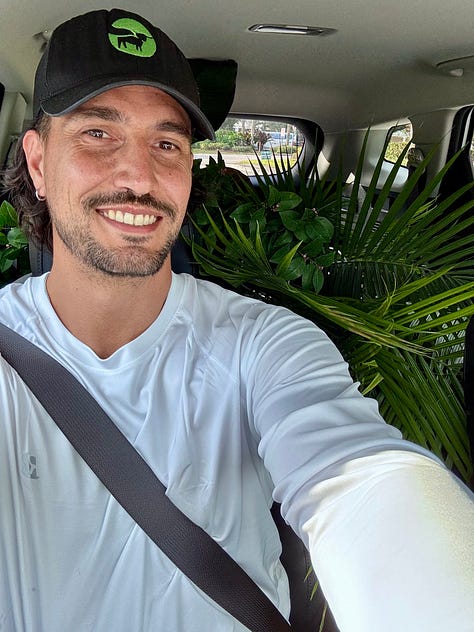
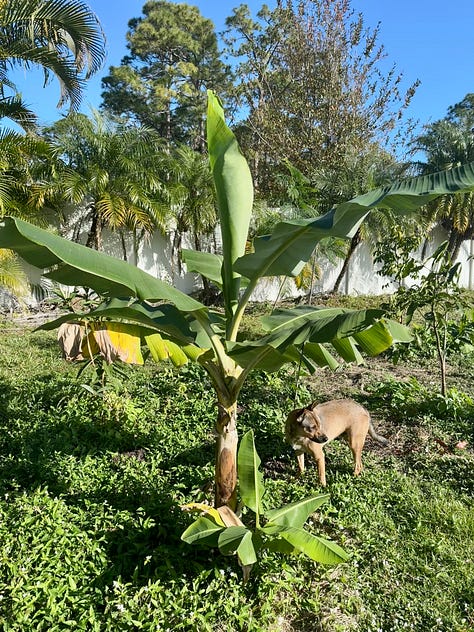

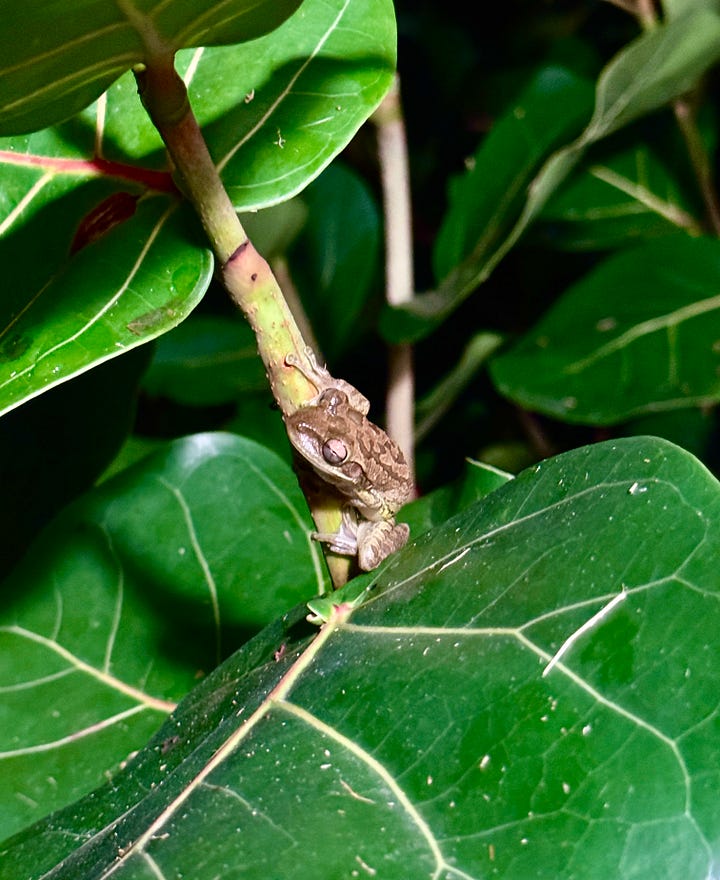
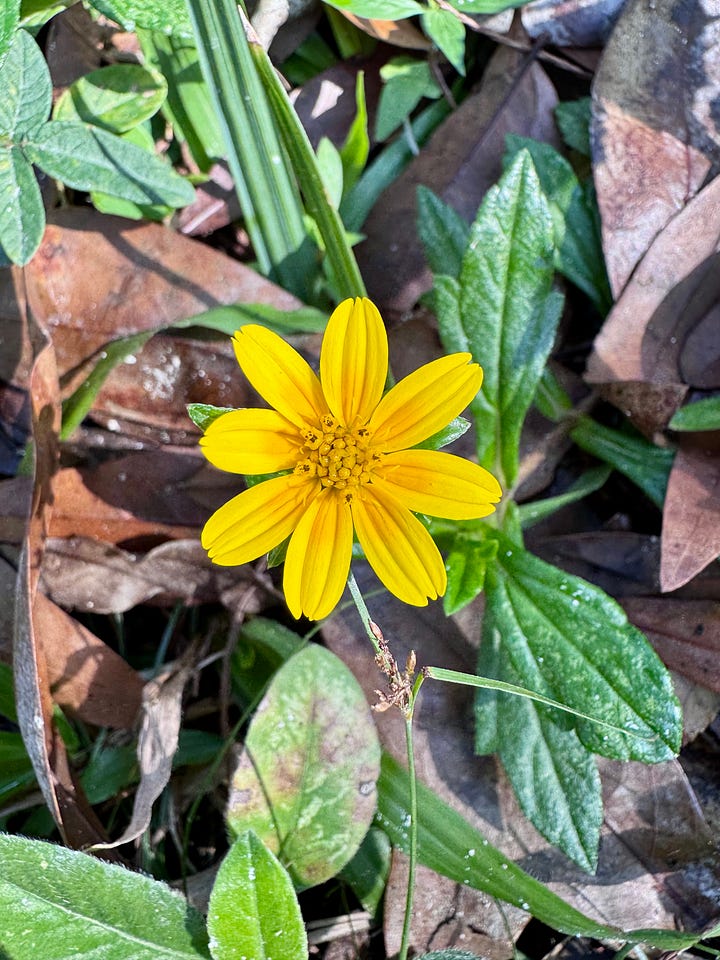
As the landscape has evolved, so has its wildlife. Swallowtail, Monarch, and Zebra Longtail butterflies flutter through the yard. Bees, wasps, dragonflies, and spiders hum with activity. Friendly visitors like corn snakes, rabbits, moles, squirrels, opossums, and even owls have appeared. Birdsongs from crows, mockingbirds, woodpeckers, and wild pigeons fill the mornings. While some neighbors keep to their own lawns, it feels as though this little patch of land is becoming a favorite meeting place for a vibrant and diverse community of creatures.
This rewilding process has been as much about healing the land as it has evolved my relationship with nature. Once a symbol of conformity, our lawn has become a canvas for possibility—a place where life reclaims its rightful place and I have found a more profound sense of purpose. It’s an ongoing experiment, a dialogue with the earth, and an act of co-creation in which I’m just another animal following the natural world rhythms.
Hace casi nueve meses, nos mudamos de México de regreso a los Estados Unidos, estableciéndonos, una vez más, en Florida. Esta vez, nos ubicamos a una hora y media al norte de Miami, donde habíamos vivido antes de explorar la vida al sur de la frontera.
Nuestra nueva casa está en una zona rural del condado de Palm Beach, un mundo aparte del bullicio diario y el ruido de las ciudades. Es una propiedad de 1.25 acres con una casa sólida de concreto construida en los años 70. Cuando llegamos, el terreno estaba cubierto mayormente de césped, un emblema clásico del sueño americano y su obsesión por los jardines perfectamente cuidados. Sin embargo, estos tramos de verde parecían carecer de propósito; rara vez veía a mis vecinos usar sus extensiones de césped cuidadosamente arregladas. En América Latina, estas habrían sido perfectas canchas de fútbol, llenas de energía y comunidad.
Uno de los regalos más valiosos de mi tiempo en México fue el conocimiento que adquirí a través de cursos de agroforestería y herbolaria. Estas experiencias profundizaron mi conexión con la naturaleza y me presentaron la sabiduría del calendario maya. Fue a través de esta tradición que descubrí mi nawal, o nahual: Q’anil, la semilla. Este descubrimiento plantó algo dentro de mí: un sentido de responsabilidad y reverencia por el crecimiento, tanto literal como metafórico.
Debo admitir que la paciencia no es una de mis virtudes, especialmente cuando se trata de jardinería tradicional. La idea de camas de flores meticulosamente cuidadas nunca me ha atraído. Sin embargo, disfruto el acto de plantar, propagar, recolectar semillas y podar, trabajando con las plantas y los animales en armonía con sus ritmos naturales. La agroforestería me ha enseñado la importancia de sincronizarme con la tierra, una práctica que comienza con la observación. Los expertos recomiendan pasar un año simplemente observando y aprendiendo del entorno antes de hacer cambios significativos. He abrazado esta práctica, dedicando incontables horas a observar mi patio, conectándome con sus ciclos y particularidades.
En esos primeros días, corté el césped algunas veces, no por razones estéticas, sino para convertirlo en mantillo y abono, enriqueciendo el suelo y alentando a las especies nativas a reclamar su espacio. Hoy, alrededor del 90 % del terreno se ha transformado; ya no es una extensión verde monótona, sino un ecosistema diverso y floreciente. Donde antes dominaba el césped, ahora prospera una mezcla de especies, incluidas plantas que alguna vez se descartaron como "malezas" pero que ahora se revelan como aliadas sagradas y medicinales: gotu kola (salud cerebral), chanca piedra (vesiculitis), centella (refuerzo inmunológico), bhringraj (salud de la piel y crecimiento del cabello), cardo mariano (desintoxicación hepática) y saraguey (utilizado en limpiezas espirituales).
Este viaje también me ha llevado a experimentar con paisajismo sostenible inspirado en el Método Miyawaki. Este enfoque aboga por plantar árboles y arbustos nativos en alta densidad para fomentar un tipo de competencia cooperativa. La proximidad de las plantas fortalece sus sistemas de raíces y crea una red micelial robusta, transformando el espacio en un bosque autosostenible en tres años. Es diez veces más denso y cien veces más biodiverso que los métodos tradicionales de reforestación. Mientras sigo el principio de plantar especies nativas, he ampliado el círculo para incluir especies tropicales que prosperan en esta latitud. Ahora, jackfruit, níspero, mango, plátano, limón, lima, toronja, aguacate y morera comparten el terreno, creciendo junto a plantas pioneras como el tabaco, el burnweed, la emilia y el tomate de pantano, que han brotado de manera independiente a lo largo de los bordes del cercado.
A medida que el paisaje ha evolucionado, también lo ha hecho su vida silvestre. Mariposas como la cola de golondrina, monarcas y cola larga de cebra revolotean por el jardín. Abejas, avispas, libélulas y arañas están llenas de actividad. Visitantes amistosos como serpientes de maíz, conejos, ardillas, zarigüeyas e incluso búhos han hecho apariciones. Los cantos de aves como los sinsonte, carpinteros y cuervos llenan las mañanas. Aunque algunos vecinos se mantienen en sus propios patios, parece que este pequeño espacio renaturalizado se ha convertido en un punto de encuentro para una comunidad vibrante y diversa de criaturas.
Este proceso de renaturalización ha sido tanto sobre sanar la tierra como sobre reimaginar mi relación con la naturaleza. El césped, una vez símbolo de conformidad, se ha convertido en un lienzo de posibilidades: un lugar donde la vida recupera su lugar legítimo y donde yo también he encontrado un sentido más profundo de propósito. Es un experimento en curso, un diálogo con la tierra y un acto de co-creación con los ritmos del mundo natural.

